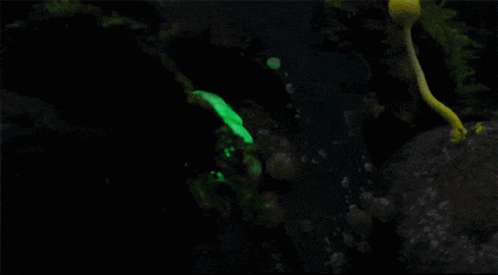- RAAJVIR VIJAY
- Dec 12, 2020
- 2 min read
Updated: Dec 7, 2021
If you have seen fireflies, you can recall how they magically glow, and how they create a beautiful spectacle as they buzz around in the night. Even a few marine organisms produce light inside their body, illuminating the dark ocean bed with their light. But have you ever wondered how and why they do that? Let me tell you.

How
Bioluminescence occurs through a chemical reaction that produces light energy within an organism's body. This chemical reaction is between a chemical called ‘luciferin’ and oxygen.

Not all organisms contain this chemical, and therefore only the ones that do can produce light. The capable animals can closely control when they light up by regulating their chemistry and brain processes depending on their needs. Some contain a catalyst called ‘luciferase’, which
helps speed up the reaction.

Others bundle the luciferin with oxygen in what is called a “photoprotein”, that is ready to light up the moment it is needed. Usually, a specific ion is released at that time, which starts the reaction in the photoprotein, and also enables the organism to control the intensity and color of the glow!
Why
One of the most common uses is feeding. Some organisms use bioluminescence to light up the area so that they can see and catch the prey easier. Some animals even use their light to lure their prey into its mouth.

Others use bioluminescence to protect themselves from predators. A few animals use a strong flash of bioluminescence to scare off an impending predator. Some release a ‘bioluminescence bomb’ when a predator is close by, to distract and confuse it. A very interesting tactic used by some animals close to the surface of the water is to illuminate themselves in such a way that it matches with the light coming from the surface, and therefore camouflages it. This is called counter-illumination
Animals don't only need to look for and attract food; bioluminescence can also play a part in attracting a mate. For example, the male Caribbean ostracod, a tiny crustacean, uses bioluminescent signals to attract females. Some laminate to differentiate themselves. Anglerfish, flashlight fish, and pony fish all are thought to luminesce in order to tell the difference between males and females.

Scientists have done extensive research on bioluminescence by studying them closely, and they have learned a lot from them. For instance, many are experimenting with Bioluminescent trees that could help light city streets and highways, and therefore would reduce the need for electricity.
As always, thanks for visiting the blog, and I really appreciate that you have come this far and I hope you liked it. If you did, click the like button. If you like my posts, join us, if you haven't yet. Check out our forum too, while you are at it.
Credits:www.nationalgeographic.org/encyclopedia/bioluminescence/,https://ocean.si.edu/oceanlife/fish/bioluminescence







Comments